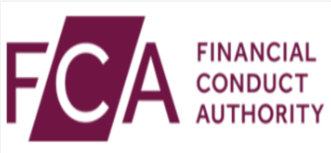EBA's José Manuel Campa: 'We are here to help solve problems'
When the European Banking Authority was created in 2011, it was the only show in town, the first agency created to insulate Europe’s banking system from the kind of ruinous collapse it faced from 2007 as Wall Street’s implosion was swiftly followed by a eurozone financial crisis.
By the time José Manuel Campa took over as its chair in late 2019, the agency was sharing the limelight with the European Central Bank, which took over the supervision of the eurozone’s banks in 2014, and the Single Resolution Board, created the following year to ensure Europe’s banks could safely fail.
Soon, a new EU agency, AMLA, will further dilute the EBA’s sphere of influence by assuming responsibility for anti-money laundering rules across the EU’s financial institutions, including banks.
“Internally . . . we need to make sure that we continue to have clarity in that we are here to help solve problems, we’re not here to find things to do,” Campa says, reflecting on the challenges the EBA has faced as others have moved in on what was once its domain.
Campa’s agency was originally created to “build a single regulatory and supervisory framework” for the entire of the EU and the European Economic Area’s (EEA) banking system.
At inception, the main focus was crisis mitigation — harmonising rules and approaches across the EU so there would be no weak links when the next shock came. A pan-European body overseeing and testifying to banks’ safety was also considered more likely to reassure investors than a country pronouncing on its own institutions, since the eurozone financial crisis exposed how a country’s fate could rise and fall with its banks.
The EBA’s priorities and approach were set by the EU and steered by a board featuring representatives of each of the countries’ supervisory agencies, who also contributed members to committees where more detailed policies were robustly debated.
Now, the EBA’s guiding light is a supervisory board largely comprised of representatives from the 20 countries whose policies and positions on key topics can be set by the ECB’s Single Supervisory Mechanism (SSM) which they are a part of.
The ECB has also taken centre stage on some of the EBA’s core functions, most notably the stress tests, exercises the EBA once used to order banks to raise billions of extra capital so they could better withstand an imagined crisis. The eurozone countries still take part in the EBA’s biennial stress tests, but the ECB runs its own at least once a year.
Regulators, from the eurozone and non-eurozone contingent, say that Campa has so far done a good job of threading what is a very fine needle — preventing the EBA’s discussion from turning into a them versus us dynamic between the ECB countries and those outside, while still keeping the ECB onside.
Campa, a former financial management and economics professor and public servant, argues that the creation of the SSM has made some aspects of the EBA’s work easier, since a key objective of the EBA is promoting consistent banking supervision across countries in the EU and the EEA.
“The ECB is actually incredibly helpful . . . we collaborate a lot, because they are the ones that are actually implementing a single supervisory approach across the board,” says Campa. “We have a very intense co-operation and co-ordination with them.”
One of the ECB and EBA’s joint goals is banking union, the grand European project which aims to transform 27 disjointed markets for loans, savings and current accounts into a single EU one, where customers, capital and licences can operate seamlessly across borders.
The establishment of the SSM and the Single Resolution Board were key markers in the decade-old project, but the third leg of banking union, a single European scheme to guarantee bank deposits, has proved elusive. After another attempt at a deal on the deposit scheme failed in June, is it not time to call it a day and make the best of what Europe has achieved?
Not for Campa, who is used to putting in the hard yards in difficult circumstances. He spent two and a half years as secretary of state in Spain’s economy and finance ministry at the height of the eurozone crisis, from 2009 to 2011, as the country sought EU aid for its ailing banking sector.
“If a table is to be stable, it needs three legs, a two-legged table, is not stable,” Campa says, sounding more like a rapper than a regulator, adding that the protection afforded by the elusive European Deposit Insurance Scheme is “fundamental” to the idea of a single banking market.
“I’m convinced it will happen,” he says of the completion of the full banking union. Without any obvious solution to the long-running impasse, will it happen in his lifetime? “Please, it is my birthday,” he replies. He has just turned 58.
Banking union was conceived before the UK’s 2016 vote to quit the EU, but its more recent developments have taken place against the post-Brexit backdrop of one-upmanship, as the EU tries to bolster its financial centre relative to London.
The EU’s latest banking capital directive is mostly about transposing the most recent Basel capital rules into European law, but the proposals also included two elements seen as indicative of a less open European banking market.
One clause in the original capital directive prohibited banks and other financial centres from using cross-border permissions to sell from non-EU countries into the single market. Another provided for foreign banks to be forced to turn some of their EU branches into subsidiaries, with all the capital and other costs that would involve.
Both measures prompted fierce backlash — from the finance industry and some EU countries — and are still being debated as the legislation heads to the European parliament. Campa in November joined with two top ECB regulators to warn politicians they risked diluting the global rules so much that Europe’s reputation as a financial centre could be tarnished.
“The key message for me is twofold,” says Campa. “First, is that there is not a Fortress Europe, but that we continue to provide adequate services and openness to international markets. And second, that those [entities] that are situated outside the European Union [and doing business in the EU] are properly done, that they’re not done for the purpose of arbitrage.”
Once the directive is finally agreed, Campa’s agency will be responsible for transforming the lengthy document into a single banking rule book that banks across the EU can follow.
Other upcoming projects include supervising digital coins from 2025, and work around sustainability, including overseeing the introduction of the green asset ratio from 2024, which requires about 150 large banks to publish the percentage of their assets that meet green thresholds.
Digital and sustainability are both challenging issues, but they fit neatly into Campa’s category of “very, very relevant problems that the EBA is in a good position to help to solve” and should be spending its time on now it has less to do on the core banking front.
The EBA also has any number of other smaller things on its plate — its 2022 programme of work includes 25 activities across five strategic areas. And that’s after Campa has done his whittling down.
“When I went to the [Spanish] government, I said, ‘My desk has two drawers, in one drawer I’m going to put all the ideas that I’d like to do, the other drawer starts empty and I’ll put in there all the ideas that I thought were crazy and I managed to stop someone doing.’
“The goal is to empty the first one, and fill the second.” In government, he says, he succeeded “more in filling up the empty one than emptying the full one”. His EBA term runs to March 2024, he’s hoping for a more balanced outcome this time around.























































First, please LoginComment After ~